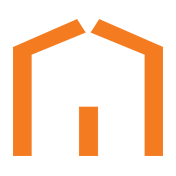How to Prevent and Detect Strokes
In the next 40 seconds, someone in the United States will have a stroke. Are you among those at highest risk?
A stroke occurs when a blood vessel in the brain ruptures or is blocked by a clot. A stroke caused by a blockage is called an ischemic stroke. A hemorrhagic stroke is the result of a ruptured vessel that bleeds into or around the brain. The blockage or bleeding deprives brain cells of adequate oxygen-carrying blood and the cells start to die, which can lead to ongoing mental and physical impairment (difficulty thinking, speaking and moving) or even death.
Strokes are the fourth-ranked cause of death in the United States and a primary reason for long-term disability among adults. Each year, about 795,000 Americans suffer a new or recurrent stroke, and about 60 percent of strokes occur in women and 40 percent in men. Fortunately, 80 percent of all strokes are preventable.
If a person shows signs of a stroke, it is crucial to seek medical help immediately. Never wait to see if symptoms lessen. Signs of a stroke include the following:
- · Sudden weakness, numbness or paralysis of the face, arm or leg, often on one side of the body.
- · Sudden trouble speaking or understanding; confusion.
- · Sudden vision problems in one or both eyes.
- · Sudden difficulty walking, dizziness or loss of balance.
- · Sudden severe headache with no known cause.
Older adults experience more strokes, often because they face more cardiovascular disease and are more sedentary. To reduce the risk of a stroke, particularly in aging loved ones, follow these recommendations:
- · Eat a healthier diet.
- · Manage blood pressure.
- · Maintain physical activity.
- · Lose extra weight.
- · Lower cholesterol levels.
- · Reduce blood sugar.
- · Avoid smoking.
To learn more about stroke prevention and resources to help a stroke survivor, visit StrokeAssociation.org or call 1-888-4-STROKE (787653).
How have you been successful in encouraging aging loved ones to make stroke-prevention lifestyle changes?




